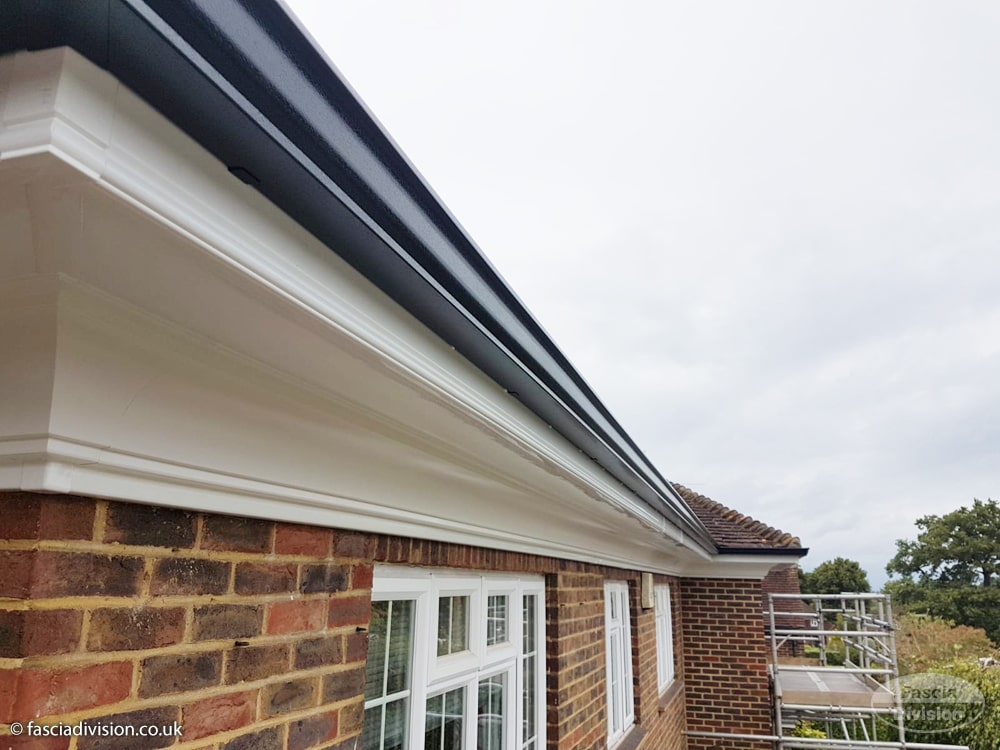
Fascia And Soffit Experts
Add a review FollowOverview
-
Sectors IT - Software Development
-
Posted Jobs 0
-
Viewed 19
Company Description
The 10 Scariest Things About Fascia And Soffit Specialists

Understanding Soffit and Cladding: Importance, Types, and Installation
Soffit and cladding are two important components of a structure’s exterior that often go unnoticed however play a vital role in both aesthetics and performance. While soffit refers to the material that covers the underside of eaves or overhangs, cladding refers to the material applied to the outside of a building to supply it with a protective layer and a visually appealing surface. This detailed short article will look into the types, significance, benefits, installation, and regularly asked questions regarding soffit and cladding.
Significance of Soffit and Cladding
Both soffits and cladding serve considerable functions for building and architectural style:
Soffit
- Ventilation: Adequate soffit ventilation enables airflow in the roof space, which assists control temperature level Fascia And Soffit Specialists humidity, minimizing the risk of mold and rot.
- Defense: Soffits safeguard the rafters and eaves from water damage and pest invasion.
- Aesthetic Enhancement: Well-designed soffits enhance the overall appearance of a structure, supplying a completed look to roof overhangs.
Cladding
- Insulation: Cladding helps to insulate the structure, enhancing energy performance by preserving interior temperatures.
- Weather condition Resistance: It protects the building from components such as rain, wind, and snow.
- Visual Appeal: With a variety of products readily available, cladding allows designers to create aesthetically spectacular outsides.
- Maintenance: High-quality cladding decreases the need for regular maintenance and repairs.
Types of Soffit and Cladding
Soffit Types
Soffits can be available in various products, consisting of:
- Vinyl: Known for its low maintenance and weather-resistant properties.
- Aluminum: Durable and resistant to corrosion however might dent simpler.
- Wood: Offers aesthetic appeal however needs regular maintenance and treatment for weather resistance.
- Fiber Cement: Combines sturdiness with the appearance of wood, resistant to rot and insects.
Cladding Types
The choice of cladding materials can significantly impact both visual appeals and functionality. Common types consist of:
- Vinyl Cladding: Cost-effective, light-weight, and available in various designs and colors.
- Wood Cladding: Naturally gorgeous, however demands routine treatment and upkeep.
- Brick: Extremely long lasting and fireproof but more pricey and needs professional installation.
- Stone and Stone Veneer: Offers a classic look and unrivaled toughness, suitable for upscale homes.
- Fiber Cement: Mimics wood or masonry with a fraction of the maintenance, resistant to weather and pests.
- Metal Cladding: Often used in contemporary styles, provides an industrial appeal and significantly resists weathering.
Contrast of Soffit and Cladding Materials
The following table details the essential features and qualities of various soffit and cladding products:
| Material | Maintenance | Toughness | Visual Appeal | Expense | Insulation Property |
|---|---|---|---|---|---|
| Vinyl Soffit | Low | Medium | Excellent | Low | Low |
| Aluminum Soffit | Medium | High | Fair | Medium | Low |
| Wood Soffit | High | Low to Medium | Outstanding | Medium | Low |
| Fiber Cement | Low | High | Outstanding | Medium | Medium |
| Vinyl Cladding | Low | Medium | Excellent | Low | Medium |
| Wood Cladding | High | Medium | Excellent | Medium | Medium |
| Brick Cladding | Low | High | Excellent | High | High |
| Stone Veneer | Medium | High | Outstanding | High | High |
| Metal Cladding | Low | High | Fair to Excellent | Medium to High | Low |
Installation of Soffit and Cladding
The installation procedure of soffit and cladding differs depending on product option and regional building regulations. Nevertheless, comprehending the basic steps included can be handy:
Steps for Installing Soffit
- Preparation: Gather all tools and products required, including panels, nails, and security gear.
- Measurement: Measure the location accurately to cut soffit panels to the appropriate size.
- Ventilation: Ensure proper air flow by incorporating vents where essential.
- Installation: Attach the panels beginning with one side, guaranteeing they fit correctly into the recognized framework.
- Ending up Touches: Seal any spaces for insulation and looks.
Actions for Installing Cladding
- Framework Setup: Create a robust structure using vertical battens if needed.
- Insulation: If insulating, set up insulation boards before cladding.
- Cutting Panels: Measure and cut cladding panels based on style specifications.
- Attachment: Secure panels utilizing appropriate fasteners, ensuring positioning and level.
- Sealing: Seal joints and edges for weather condition resistance.
Often Asked Questions (FAQs)
1. What is the average lifespan of cladding products?
The lifespan varies extensively amongst materials:
- Vinyl: 20-40 years
- Wood: 10-30 years (with maintenance)
- Brick and Stone: 50+ years
- Fiber Cement: 25-40 years
2. Is soffit installation necessary?
Yes, soffit installation is necessary for proper ventilation and safeguarding the roof structure from weather damage, insects, and rot.
3. Can soffit be installed without cladding?
Yes, soffit can be set up individually. However, it is typically set up in combination with cladding for improved visual appeals and security.
4. What factors should be considered when picking cladding?
Important factors consist of:
- Desired aesthetic
- Climate considerations
- Budget plan restraints
- Maintenance requirements
- Energy effectiveness
5. Can I set up soffit and cladding myself?
While DIY installation is possible for those with adequate skills, hiring professionals guarantees quality craftsmanship and compliance with structure codes.
Soffit and cladding are crucial elements of a building’s exterior that considerably impact visual appeals, functionality, and energy effectiveness. Comprehending their types, benefits, and installation processes can aid homeowners and home builders in making informed choices. Whether using vinyl, wood, or fiber cement, choosing the best materials and making sure proper installation will improve the durability and appeal of any structure while keeping its protective qualities.
